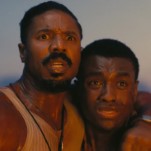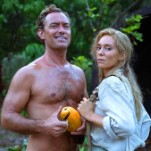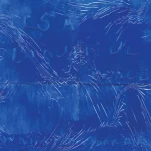SXSW Update – The End (Day 4)

On Saturday, the Paste army’s last full day in Austin, I spent most of the afternoon in our suite at the Hampton, writing and preparing for my interview later that night with Dexter Romweber, formerly of the little-known but highly influential Flat Duo Jets.
In the evening, I ordered some Chinese food from room service, ate and then took a cab to the drugstore to buy some blank cassettes for the interview, came back to the hotel and did some more research—ah, the glamorous life of the rock journalist, holed up like a cop on stakeout.
Around 8:00 p.m., I headed down to The Jackalope, a punkish rockabilly joint on the strip, to meet Dex for my interview. The singer/guitarist parted ways with long-time musical partner Crow about five years ago and has since been touring with new drummer Sam Sandler as the Dexter Romweber Duo (pictured right). When I arrive, Dex and Sam aren’t there yet, so I grab a plastic cup of beer at the bar and wait patiently. I haven’t seen many recent pictures of Romweber, as I was most familiar with him from old Flat Duo Jets recordings and the 1987 documentary Athens, Ga. Inside Out, which in addition to Flat Duo Jets features R.E.M., The B-52’s and Pylon.
After about 15 minutes, I spot a fairly clean-cut, middle-aged guy with short, dark hair who quite closely resembles the idiosyncratic yet passionate young Romweber I saw in the film. He looks over at me from across the bar. “Are you the guy?” he asks.
“I don’t know,” I reply. “Are you the guy?” The bartender, who used to live in Chapel Hill, N.C., (where Dex has lived for most of his life) also recognizes him. They talk about how they both have much shorter hair these days. A band has just started playing in the main room, so we find a slightly quieter room toward the back and do the interview (look for the story in the scrapbook section of Paste’s June/July issue).
Afterwards, Dex and Sam hit the stage, blasting the small but enthusiastic crowd with their punked-out blend of rockabilly, blues, country and ’50s-style rock’n’roll. Both are dynamos on stage, their bodies jerking about in ecstasy and agony as the music pours out. They’re both excellent players and Sam does the whole set standing up at his kit. He’s got the biggest bass drum I’ve ever seen (30” in diameter) and the shells are plastered with pictures of Tina Louise (Ginger from Gilligan’s Island).
Unbelievably, Dex has the exact same guitar he was using 18 years ago in the Athens, Ga. documentary, only slightly more beat-up. It’s unlike any I’ve ever seen and has this great dirty sound to it. I say goodbye after the show and head to Stubb’s on Red River St. to meet the Paste crew for Patty Griffin.
-

-

-

-

-

-

-

-

-

-

-

-

-

-

-

-

-

-

-

-

-

-

-

-

-

-

-

-

-

-

-

-

-

-

-

-

-

-

-

-








































